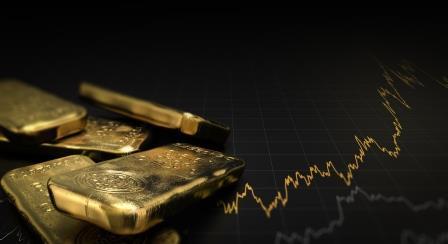The US rate hikes continue to cast shadows on gold’s upside potential. The aggressive rate hikes of the US Federal Reserve made the US currency an attractive destination for more yield, prompting selling pressure in gold-like non-interest yielding assets.
After hiking rates by seventy-five basis points in the past four successive meetings, the US central bank delivered another 50-basis point rate hike this week. The bank also hints at more rate hikes in the coming meetings.
In the key London market, though prices revisited their all-time of $2070 an ounce in March, it broadly traded choppy with negative rest of the year. Russian invasion of Ukraine, the multi-year high US dollar, and aggressive policy measures taken by central banks across the globe influenced the trend of the yellow metal.
Meanwhile, in the domestic gold market, prices surged to a fresh all-time high and traded firm. Prices at the domestic futures market went up to Rs 55000 per ten grams, crossing a nine-month high this week.
Indian gold prices follow their foreign benchmarks but domestic demand, currency exchange rates, and government policies can experience significant price variations from time to time.
Gold prices in Indian markets started this year at Rs 48000 per gram and it swiftly rose to an all-time high of Rs Rs 55550 levels in March. This was due to escalating geopolitical tensions and a firm overseas market. Despite prices falling back to below Rs 49000 levels by September, the metal was in check from a steeper fall because of a feeble Indian Rupee and steady physical demand.
A weak domestic currency contributes to the rising pressure on prices. The extremely strong US dollar devalued the Indian Rupee, but it gives strength to domestic gold prices. Since a large chunk of our gold demand is met through imports, domestic currency weakness increases the landed cost of the commodity causing a price rise.
The Indian Rupee declined to a fresh all-time low this year and still hovering near record highs. The currency weakened to Rs 83.26 against the US dollar in October due to various fundamental reasons. Global factors such as the Russia-Ukraine conflict, soaring crude oil prices, the strong US dollar, and the tightening of global financial conditions put pressure on the domestic currency.
Festive and wedding-related demand also brought some shine to Indian gold prices. Domestic jewellery demand has significantly increased this year to levels seen in the pre-pandemic periods. This due to by an urge of Indian households to buy gold for festive and wedding purposes after two years of postponement of large celebrations.
The unprecedented appetite for gold among Indian households is unparalleled all over the world. This usually keeps domestic demand firm, resulting in buyers paying premiums against international markets.
India is the world’s second largest gold consumer, with an annual demand of approximately 800-850 tonnes. Almost 80% of this gold is used for jewellery, with the remainder in the form of gold coins and other industrial applications.
The outlook of the metal remains lacklustre in the overseas market. Rising geopolitical tensions could offer support to prices to an extent but a firm US dollar, higher bond yields, rising interest rates, and steady equities are likely to weigh down investor sentiment. However, a weak domestic currency and prevailing firm demand continue to contribute to the rising pressure on domestic gold.
First published in The Economic Times








